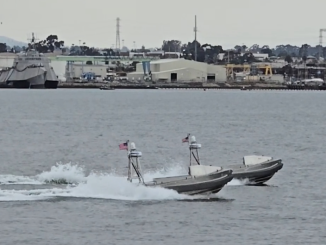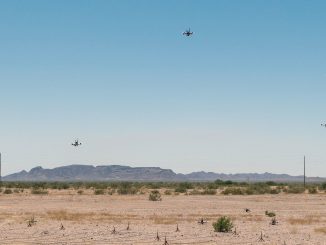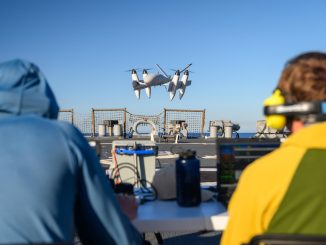
The U.S. Navy has successfully launched an Unmanned Aerial System (UAS) from a submerged submarine, the first step to “providing mission intelligence, surveillance and reconnaissance (ISR) capabilities to the U.S. Navy’s submarine force.”
The all-electric, fuel cell-powered XFC UAS was launched from a “Sea Robin” launch vehicle deployed from the submerged “Los Angeles class USS Providence (SSN 719) submarine. The drone, developed by the U.S. Naval Research Laboratory (NRL), is first fired from the sub’s torped tube using the launch vehicle system designed to fit an empty Tomahawk launch canister (TLC) from the submerged submarine.
Then the Sea Robin launch vehicle with integrated XFC reaches to the ocean surface where it appears as a spar buoy.
Upon command of the submarine, it is then vertically launched from Sea Robin to a marginal altitude where it assumes horizontal/conventional flight configuration thanks to the its X-wing airfoil autonomously deployed by the folding-wing XFC.
During the first launch, the drone flew for several hour mission “demonstrating live video capabilities streamed back to Providence, surface support vessels and Norfolk before landing at the Naval Sea Systems Command Atlantic Undersea Test and Evaluation Center (AUTEC), Andros, Bahamas.”
The XFC is a fully autonomous, all electric fuel cell powered folding wing UAS with an endurance of greater than six hours. The non-hybridized power plant supports the propulsion system and payload for a flight endurance that enables relatively low cost, low altitude, ISR missions. The XFC UAS uses an electrically assisted take off system which lifts the plane vertically out of its container and therefore, enables a very small footprint launch such as from a pickup truck or small surface vessel.
Image credit: U.S. Navy











